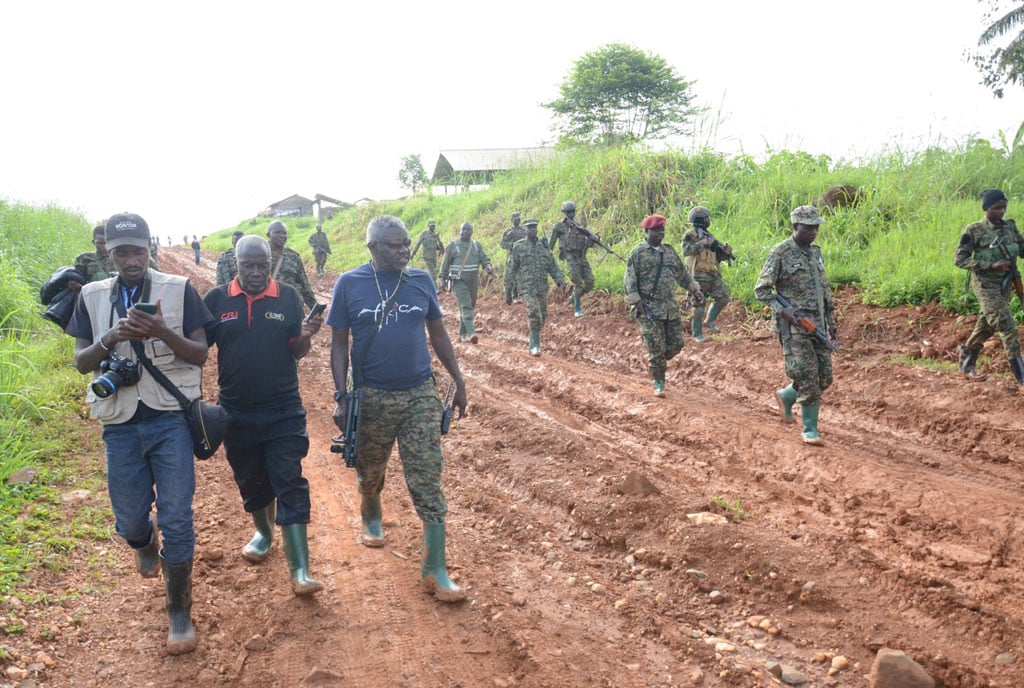Conserve Virunga for regional devt, Dutch official advises

John Tibesigwa, Acting Chief Conservation Area Manager of Kibale Conservtion Area
The First Secretary at the Embassy of the Netherlands in Kampala, Odde de Jong has urged organisations in the tourism sector to conserve the Greater Virunga Landscape (GVL) shared between Uganda, Rwanda and the Democratic Republic of Congo (DRC) to realise regional development.
Mr Jong also highlighted that the landscape transcends its geographical boundaries, as recognised by United Nations Educational, Scientific and Cultural Organisation (UNESCO) which acknowledges the landscape as boasting the most diverse wildlife habitats in Africa.
“From lush forests and expansive savannas to intricate swamps and towering volcanic peaks, the landscape offers invaluable ecological, economic, and social benefits. It provides sanctuary to iconic species like mountain gorillas and elephants while sustaining local livelihoods and fostering tourism,” Mr de Jong said.
He made these remarks while opening a two-day validation meeting of the draft transboundary strategic collaboration plan 2024/2033 at Protea Skyz Hotel in Kampala on Wednesday.
“We can pool our collective expertise and resources to safeguard the landscape’s ecological integrity, promote sustainable development and ensure the well-being of its inhabitants,” he added.
Comprising eight national parks, two forest reserves and two wildlife reserves, the greater Virunga landscape covers an area of 13,200 km2 of some of the most diverse habitats in Africa. The landscape is home to Queen Elizabeth, Rwenzori, Semuliki, Bwindi Impenetrable and Mgahinga National Parks in Uganda, Volcanoes National Park in Rwanda and Virunga National Park in DRC. It is in the Central Albertine rift, areas straddling the international boundaries of the three partner states where the national parks are located.
While representing the Uganda Wildlife Authority (UWA) John Justice Tibesigwa, the Acting Chief Warden of Kibaale conservation area said the Greater Virunga landscape is a biodiversity hotspot that is home to endangered, threatened and endemic wildlife species that needs to be conserved for present and future generations for the benefit of the three member states where the landscape is located.
“Virunga is an endemic area, meaning that some wildlife like mountain gorillas cannot only be found anywhere except in the landscape in the world. This calls for combined transboundary efforts to protect the landscape from encroachment,” Tibesigwa said.
On his part, Andrew Seguya, the Executive Secretary of the Greater Virunga Transboundary Collaboration (GVTC) noted that much as Virunga is rich in a variety of wildlife, it is essential to acknowledge the challenges that persist, including insecurity in the region, population pressure on natural resources, poverty in surrounding communities, human-wildlife conflicts and the impacts of climate change.
“We need to mobilise resources and galvanise support from our global partners, knowing that our collective efforts today will shape the future of the greater Virunga landscape for generations to come. Let us continue the journey of transboundary conservation with renewed vigour and determination knowing that the path ahead may be challenging, but with unity and collaboration, we shall overcome,” Mr Seguya said.
It should be noted that in 2015, the governments of Uganda, Rwanda and the Democratic Republic of Congo (DRC) signed a treaty to promote collaboration on wildlife conservation and tourism development in the Greater Virunga Landscape. The landscape contains more vertebrate species than any other landscape of contiguous protected areas in Africa, and is an important water catchment area providing millions of people with fresh water.
Lakes George and Edward, also in the landscape, have two of the most productive fisheries in Africa, which provide food and a source of income to many families in the region. Furthermore, the landscape also supplies forest and savanna products such as building materials, fuel wood, medicinal plants and thatch grass. The landscape not only supports a high diversity of wildlife but also supports one of the highest human population densities in Africa.




